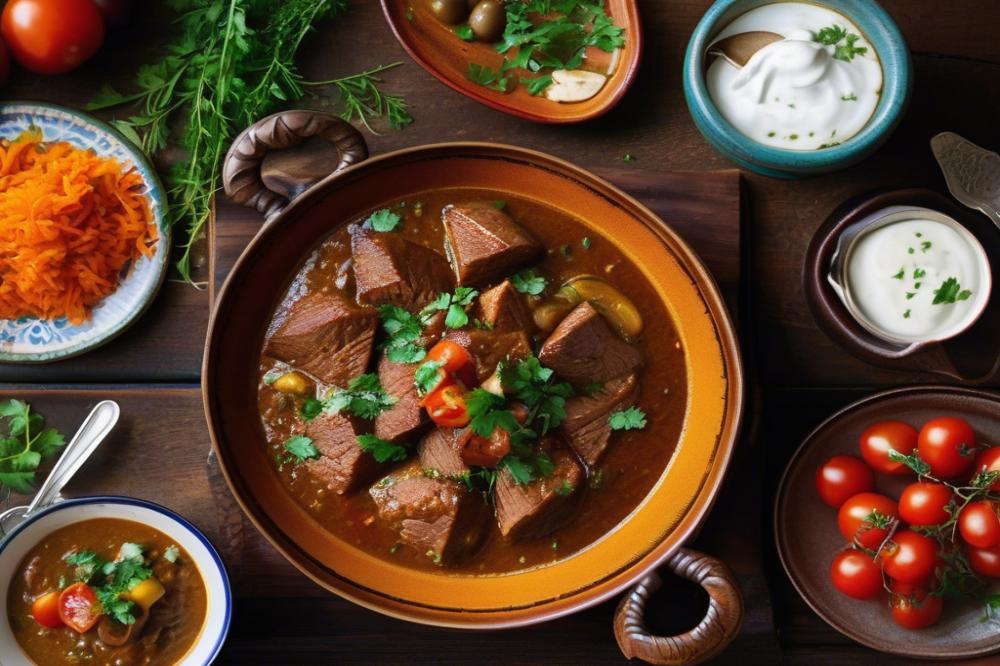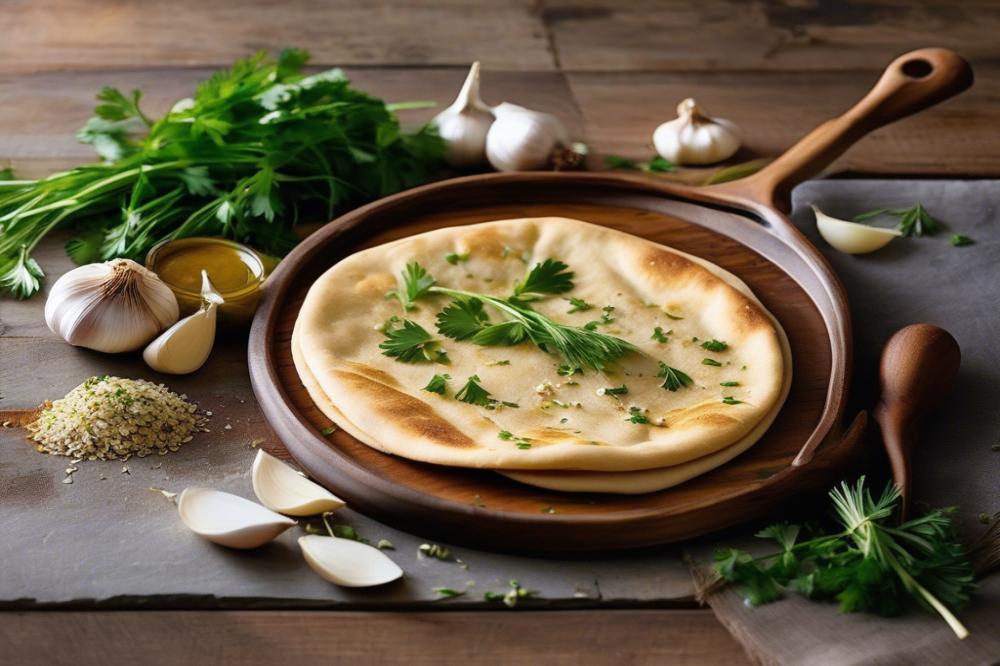Introduction
Lebanese cuisine offers a delightful array of flavors and dishes rooted in centuries of tradition. The use of fresh ingredients, aromatic spices, and diverse cooking techniques represents the essence of Middle Eastern food. Meals are often a celebration, showcasing not just an array of recipes but also the warmth of family gatherings.
Among the many traditional dishes, Laban Immo stands out as a favorite comfort food. This robust lamb and yogurt stew is incredibly popular in Lebanese households. People often prepare it during special occasions or gatherings. It embodies not just nourishment but also a sense of belonging and community.
This article will explore the secrets to making Lebanese lamb Stew. Readers can expect cooking tips, insights into spices, and step-by-step guidance on preparing this exquisite stew. Understanding the cultural significance behind Laban Immo will enhance your cooking experience. By the end, you will be ready to enjoy a meal that carries history and heart.
Lebanese Lamb Stew: Ingredients and Cooking Instructions
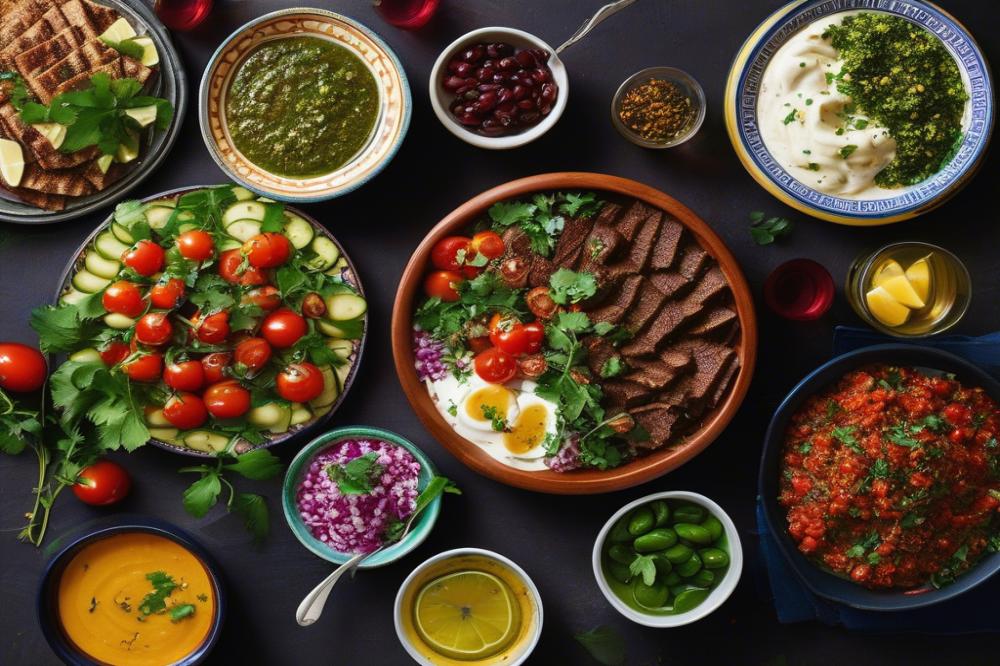
To create a rich and hearty Lebanese lamb and yogurt stew, you’ll need a variety of ingredients that come together to form a delicious dish. Here is a full list of what you’ll need:
- 2 pounds of lamb, cut into bite-sized pieces
- 4 cups of plain yogurt
- 1 onion, finely chopped
- 4 cloves of garlic, minced
- 2 cups of water or chicken broth
- 2 tablespoons of olive oil
- 1 teaspoon of ground cumin
- 1 teaspoon of ground coriander
- 1 teaspoon of turmeric
- Salt and pepper to taste
- Fresh parsley for garnish (optional)
Now, let’s move on to the cooking instructions. Follow these steps to prepare the stew:
- Start by heating the olive oil in a large pot over medium heat.
- Add the chopped onions. Sauté until they are translucent and fragrant.
- Introduce the minced garlic. Stir for about a minute to combine flavors.
- Next, add the lamb pieces to the pot. Cook until they are browned on all sides.
- Sprinkle in the cumin, coriander, and turmeric. Mix the spices well with the lamb and onions.
- Pour in the water or chicken broth. Bring the mixture to a simmer.
- Reduce the heat to low and cover the pot. Let it cook for about an hour, or until the lamb is tender.
- Once the meat is cooked, add the yogurt gradually. Stir it in gently to create a creamy texture.
- Cook for an additional 20 minutes, allowing the flavors to meld together.
- Finally, taste and season with salt and pepper as needed. Serve hot, garnished with fresh parsley if desired.
Next, let’s explore the nutritional information for each ingredient:
- Lamb: Excellent source of protein, iron, and zinc.
- Yogurt: Provides calcium, probiotics, and protein. Aids in digestion.
- Onion: Contains antioxidants and can boost heart health.
- Garlic: Known for its immune-boosting properties and flavor enhancement.
- Olive Oil: Contains healthy fats and may reduce inflammation.
- Spices: Add flavor and have various health benefits, including anti-inflammatory properties.
If you cannot find some ingredients, here are a few substitution tips:
For the lamb, consider using beef or chicken for a different flavor. Yogurt can be replaced with sour cream or a plant-based yogurt for dietary needs. In case you don’t have olive oil, any other cooking oil will work, though olive adds a unique flavor. If fresh garlic or onion isn’t available, garlic powder or onion powder can be used in smaller amounts.
Cooking tips are essential for a successful dish. Marinating the lamb in yogurt overnight tenderizes the meat and infuses it with flavor. Always taste your stew as it cooks, adjusting spices to your personal preference. Serve with rice or bread to soak up the yummy sauce.
Enjoy each bite of this affluent Middle Eastern food that brings comfort to your table!
Understanding the Flavor Profiles
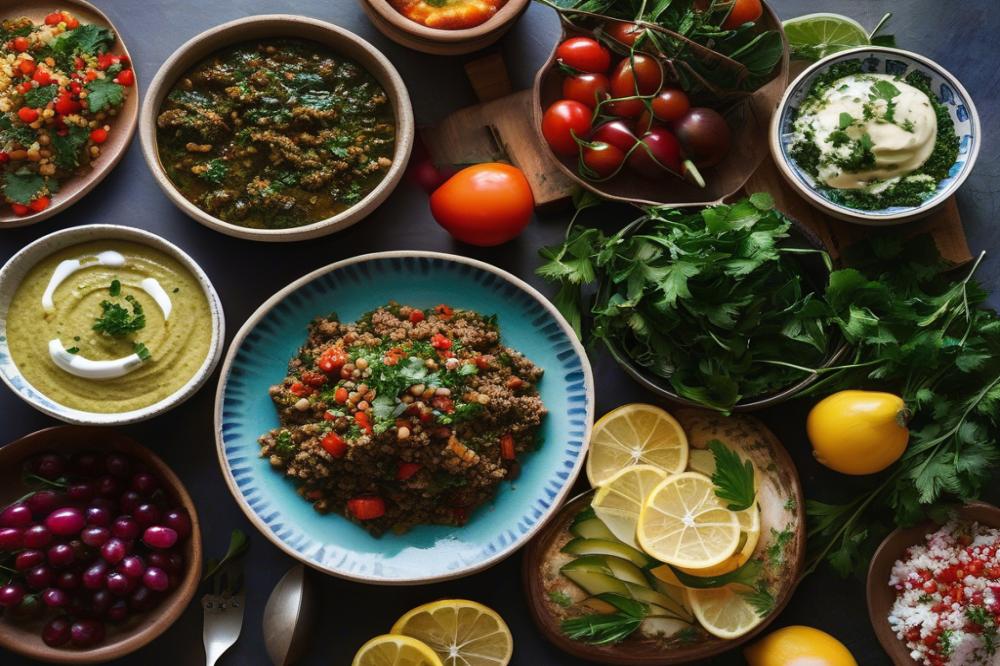
Key Spices Used in Lebanese Lamb Stew
Flavor is the heart of Lebanese cuisine, and spices play a vital role. Cumin, coriander, and cinnamon are common choices that add warmth. Sumac brings a tartness, enhancing the overall experience. While preparing the stew, fresh herbs like parsley and mint contribute a bright note. These spices and herbs work together to create an aromatic blend that transforms simple lamb and yogurt into something special.
The Balance of Flavors in the Dish
A successful lamb stew needs a delicate equilibrium. The rich flavor of the meat balances well with the tangy yogurt. Sweetness from onions and tomatoes rounds out the dish. Each element plays its part, avoiding a predominant taste that can overpower others. Cooking tips recommend slow cooking to meld the flavors perfectly. This method allows all the ingredients to infuse together, leading to a satisfying comfort food experience.
How Spices Contribute to Authentic Middle Eastern Food
Remarkably, the use of spices can define Middle Eastern food. Each spice brings its own character, creating a tapestry of tastes. Culinary traditions emphasize using fresh, high-quality ingredients. Recipes often feature a mixture of warm and cooling spices that may surprise new cooks. The layers of flavor invite diners to savor each bite slowly. This complexity reflects the rich history of the region, where spices signify more than just flavor; they represent culture and family ties. Traditional dishes like this one become stories told through taste.
Cooking Tips for Perfect Laban Immo
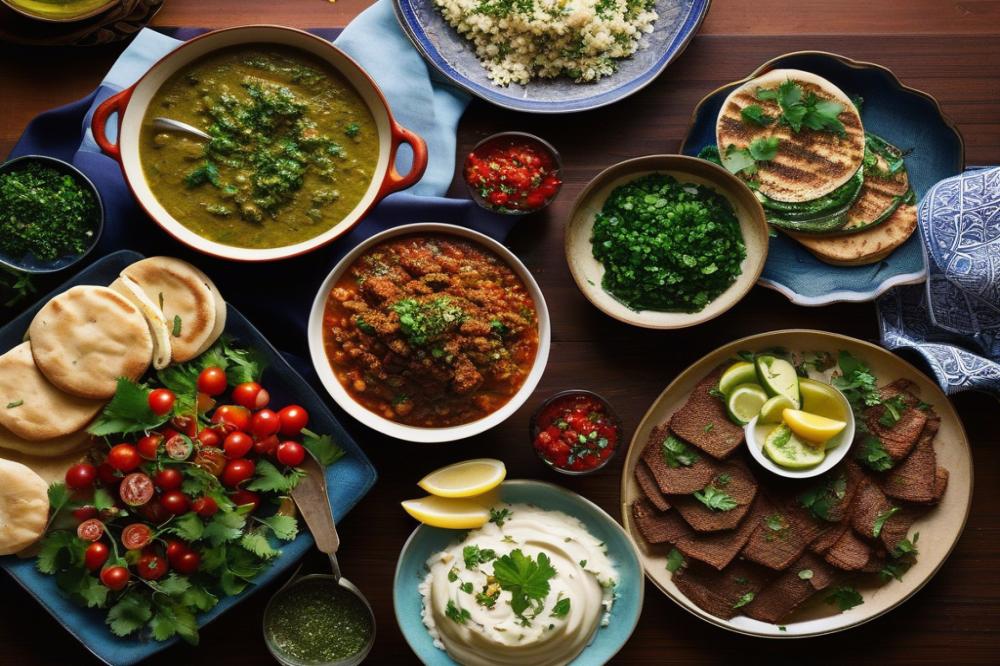
Best Cooking Methods for Tenderness
Using a slow cooker can make lamb incredibly tender. Low and slow cooking allows the meat to absorb flavors. Alternatively, braising on the stovetop is another excellent option. Begin by searing the lamb in a hot pan to lock in juices. After that, add broth and spices, then let it simmer gently. Don’t rush this process. Letting the dish cook for two to three hours makes a difference in texture.
Timing and Temperature Considerations
For the best results, plan your cooking times carefully. Cooking lamb at a low temperature preserves moisture and flavor. Keep the heat at a steady simmer to avoid boiling. A temperature between 150°F to 180°F is ideal. This range allows for gradual cooking. Monitor the stew regularly. If it seems too thick, add a little water or broth. Remember to check the tenderness of the meat as you near completion.
Common Pitfalls and How to Avoid Them
Overcooking the lamb can ruin its tenderness. Use a meat thermometer to prevent this issue. Being cautious with spices is also crucial. Too much can overpower the dish, while too little may leave it bland. Start with small amounts, and taste as you cook. Skipping the resting period can also harm the dish. Allowing the stew to sit for a few minutes before serving can enhance the flavor. Additionally, don’t forget that the yogurt should be added at the right moment. Adding it too early can cause it to curdle. Enjoy making this delicious dish from Lebanese cuisine!
Serving Suggestions and Pairings
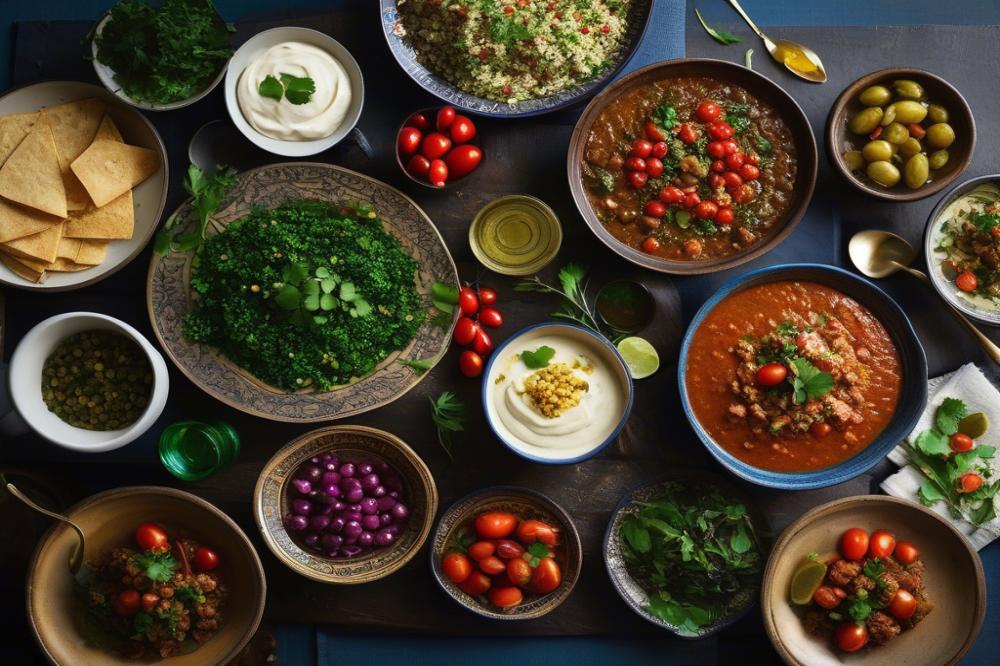
Traditional sides and accompaniments
Laban Immo shines when served with traditional sides. Flatbreads, such as pita, are perfect for scooping up the stew. Rice pilaf, often flavored with nuts and spices, offers a delightful contrast to the rich lamb. Consider adding a fresh salad, like tabbouleh, which brings brightness. Pickled vegetables add tang and excitement to each bite. They balance the creamy yogurt well, creating a beautiful harmony on the plate.
How to serve Laban Immo to enhance the dining experience
Present the stew in a large, shallow bowl. This encourages sharing, an important aspect of Middle Eastern food culture. Garnish with fresh herbs such as mint or parsley to elevate the dish’s appearance. A sprinkle of toasted pine nuts can add a pleasant crunch. When serving, provide generous helpings. Make the meal feel festive, inviting everyone to dig in. Offer extra yogurt on the side for those who love creaminess. Pairing the dish with an assortment of warm bread makes it even more comforting.
Beverage pairings that complement the stew
Choosing the right drink can elevate the meal further. A light, fruity red wine pairs well with the spices in lamb. For a non-alcoholic option, mint lemonade refreshes the palate wonderfully. Traditional herbal teas can calm the stomach after the meal. Look for something with chamomile or mint flavors. These drinks not only complement the flavors of the stew but also enhance the overall dining experience. Enjoying Lebanese cuisine is all about balance, so consider the textures and tastes of your beverages carefully.
Final Thoughts on a Heartwarming Dish
Recap of the Secrets to a Perfect Lebanese Lamb Stew
Creating a delicious lamb stew involves several key secrets that elevate this dish to new heights. Choosing the right cut of meat is crucial. Tender pieces like shoulder or leg work best as they melt in your mouth during cooking. Additionally, the incorporation of yogurt adds a creamy richness that balances the spices beautifully. Don’t forget to brown the meat before simmering; this locks in flavors and gives it color. Incorporating fresh herbs like mint or parsley at the end adds a burst of freshness that complements the hearty dish perfectly. Also, patience is necessary, as letting it simmer slowly allows the flavors to deepen and meld together.
Encouragement to Try Cooking This Traditional Dish
Cooking this traditional recipe can be a rewarding experience. Even if you are new to the kitchen, following the steps can lead to a wonderful outcome. Gathering friends or family to share this meal adds to its charm. Imagine the fragrant aromas wafting through your home as it cooks. Feeling proud as you serve this comfort food to loved ones is a delightful experience. Don’t hesitate to put on an apron and give it a try. It might inspire you to explore more recipes from Lebanese cuisine.
The Significance of Comfort Food in Lebanese Cuisine
Comfort food plays an essential role in Lebanese culture. Dishes like this stew are often linked to gatherings, celebrations, and family traditions. They warm the heart and create connections. Sharing food fosters conversations and builds relationships. Each bowl of stew carries stories and memories passed down through generations. This lamb dish is not just about nourishment; it represents love and togetherness. Embrace the joy of making and sharing it, and it will surely become a cherished part of your own dining experiences.

